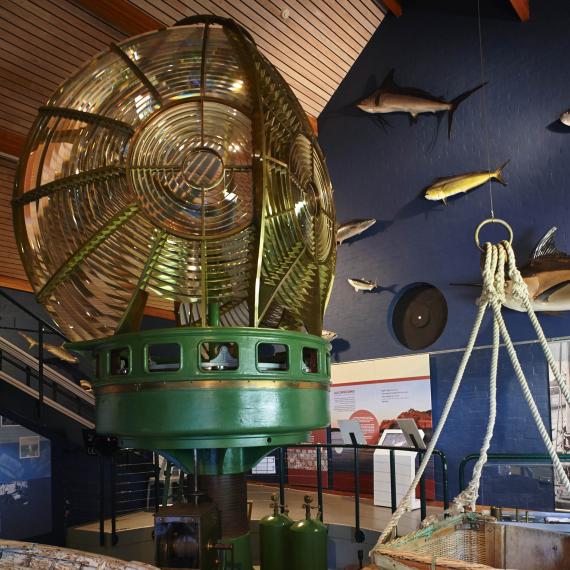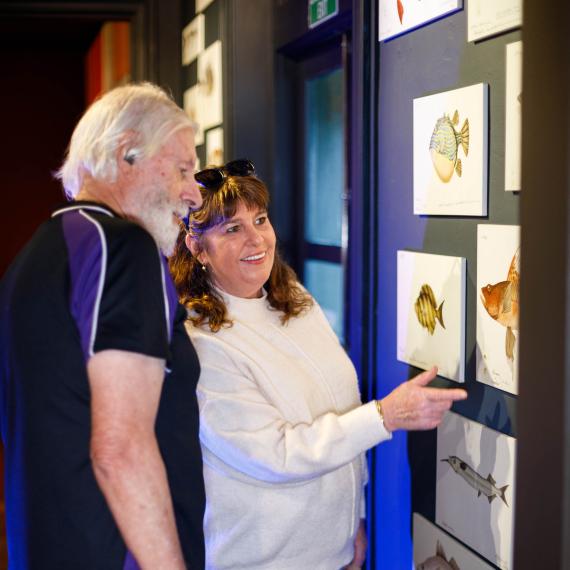
Pride of Place
Today we are in the deep south of WA in a regional centre which has been known by many names across history; Kinjarling, Frederick's Town, Albany, we're here to understand what is in a name? How has the coastal city of Albany been influenced by its place alongside the Southern Ocean and what can be learned from this place’s history as we move into its bicentennial year of 2026 and beyond?
-
Episode transcript
Jessica Machin (JM): You are listening to a podcast from the Western Australian Museum. We acknowledge and respect the Traditional Custodians of their ancestral lands, waters, and skies.
Hello, I'm Jessica Machin, working with the West Australian Museum on Stories of the Great Southern, a podcast series, where we explore the histories of the Great Southern region of Western Australia, with a diverse collection of local and expert voices to develop a greater understanding of what it means to be Western Australian today and beyond.
We are in the deep south of WA in a regional centre which has been known by many names across history (Kinjarling, Frederick's Town, Albany). We're here to understand what’s in a name. How has the coastal city of Albany been influenced by its place alongside the Southern Ocean and what can be learned from this place’s history as we move into its bicentennial year of 2026 and beyond?
Vern Gillies (VG): This whole area, you’ve got all these sites, you might have, you known, Yakkan Toort, Dog Rock, Lake Seppings, Tjuitgellong, you may have all of these Corndarup, yeah, all of these places around us that are singularly a site. But what they actually sit on, is a much larger landscape. And we recognise landscapes.
JM: This is Vern Gillies. Vern is a Menang Noongar elder. She sat down with historian Dr Toni Church from the WA Museum at the Museum of the Great Southern, on the shores of Princess Royal Harbour which Vern explains is called Mammang Koort in Menang Noongar language and shares how her cultural knowledge informs how she sees and understands this place she calls home.
VG: We recognize landscapes and Mammang Koort is exactly the same. It takes in all of that, that ocean out there, It's the ocean, it's the water, it takes in the harbour. It takes in Princess Royal Harbour, and it's called Mammang Koort because Mammang is our word for ‘whale’ and Koort is, is our ‘heart’. So that area of ocean is Mammang Koort, it's the heart of the whale. And whales were very, very important to Noongar people.
Toni Church (TC): What is the name for this area that we're sitting on? Is there a Menang Noongar name for this space?
VG: There is. This is called Kalyenup. When the first white settlers arrived, they stayed on their little Brig Amity out there in the middle of the harbour overnight. In the early evening, what they noticed was a series of fires along the foreshore.
We think that what happened was, once they were able to communicate with each other on a friendly basis, they asked, What's the name for fire? Well, it's kaarl, meaning people were catching fish, bearing fish in the shallows. They would catch their fish, light a little fire on the foreshore and cook it and eat it. And so, it became known as Kalyenup place of the fires.
JM: The Museum of the Great Southern sits on Kalyenup, the place of fires for Menang Noongar people, but it also represents the British colonial history of Albany. With government buildings built on the foreshore of the harbour, the imprint of colonisation in this place is clear. However, the story of European settlement in this area could have been much different, and the enduring legacy of foreign interactions in this place can be seen and heard across the Great Southern.
In the late 18th century and early 19th century, the British and French were locked in a race to colonise Southern territories. Symbolic claiming rituals, mapping and place naming were carried out by explorers across Australia. European explorers previously called it Terra Australis or New Holland while First Nations people had many names due to the diversity of languages, people, and cultures across the landscape. Over the years, many of the European names endured and this is reflected in place names across the Great Southern region today. Here to tell us more about this period of European expansion is Malcolm Traill, an Albany-based Historian we met in Episode 1.
Malcolm Traill (MT): So, it's interesting with place naming how that works, British explorer Vancouver named a lot of coastal features, the islands, the capes, the mountains that you could see from the coast but didn't really explore much inland. So, it was only when the French and the later British came along that they started to explore more in from the coast. So that's why there's a lot of French names around the Southwest of WA, around the Cape Naturaliste area, around Vasse and that part of the world. The French named a lot of areas near Esperance, and Esperance is a French word as well. A lot of the islands off the Esperance coast and the archipelago of the Recherche are given French names.
So, I guess the interesting thing is, well, why aren’t there any Aboriginal names? And I guess the easy answer is, well, they didn't ask really. Many of the explorers’ diaries actually do record Aboriginal names, but because it wasn't a written language, it was difficult to actually transcribe. There were different versions of it, and in many cases, explorers like to name places after their patrons and their rulers and their governor. Some Aboriginal names were used. It's interesting that the river in Albany, the Kalgan River, it's an Aboriginal word, but before that it was known as the French River or the Riviera d'Francois because the French actually named it first, it got changed by the British to the English version of French River and then got changed to the Aboriginal version of Kalgan a little later on.
So that went through three names in about 30 years, basically. So naming is it's an interesting sort of concept.
JM: Facing south-west, with your back to the colonial-era buildings at the Museum of the Great Southern at Kalyenup, you get sweeping views across the harbour known as Mammang Koort or Princess Royal Harbour. Out of the corner of your eye you will see a large wooden ship perched on the edge of a tidal lake on the southern side of the Museum. This is a replica of the Brig Amity, or simply 'The Amity’ to the locals, and you can see its image replicated on many logos, signs, and businesses across town. It's an icon. Our producer Tom drove around town asking people about it.
Local: It's a symbol of the Albany Historical Society, and unfortunately, I don't know much about it at all. I don’t know anything [laughing].
Tom Allum (TA): Asking locals what the Brig Amity means.
Local: I’ve only been here for six months and so, seeing the Brig Amity replica down near the water there, I see the name flying around quite a bit around town, but don't really know any history behind it, per say. But it seems to have quite a big presence in Albany.
JM: Okay. To be fair, Tom only convinced a few locals to speak on record.
Rest assured; the symbolism is strong. For instance, you can see the Big Amity represented on school uniforms, medical centres, motels and on the City of Albany's council logo. The Amity has become a symbol of the Great Southern since the replica was completed in 1976. Come along for a tour of the Brig Amity to explore the historical significance of the ship.
Scott Neal is a Learning and Engagement Officer at the Museum of the Great Southern, whose job involves communicating the history and legacy of the Brig Amity and arrival of British Colonists to Albany in 1826 to Museum visitors.
Scott Neal (SN): We're talking about stuff from the, 1826. Really, from a European perspective and from bits of written evidence, just one angle or facet. It should be like their launching point or their starting point to go off and start investigating different voices.
JM: The Brig Amity sits back from the shoreline, cut off from the bay by what would have once been tidal coastline, but is now a major road. The site of the Museum of the Great Southern is thought to be one of the earliest points of contact with British settlers when the original Brig Amity sailed into the harbour in late December 1826.
SN: Remember in 1826 and Major Lockyer sent here. That's only 11 years after the Battle of Waterloo. So, the French and British empires have been at war for a number of years. We can look at the words of Lockyer himself, ok, in his journal from 1826, and he says the importance of King George Stone is a place necessary to occupy, must strike every person acquainted with this country. So, an enemy holding it with its cruisers completely cut off the trade except by convoys to Van Diemen's land and Port Jackson from Europe, the Cape, either France and India. So when we look on a map and we've got the Indian Ocean and we think about all those trade routes for merchants, you know, if the British have Albany or King George Sound as a harbour, they can refit their ships, they can repair them, they can fit them back out and they sail out and you, you know, you can control or constrict that, the trade routes and the fact that, yeah, that harbours that’s a deep, deep-water harbour out there to protect the ships is really important.
In front of us, there is a ship, or more accurately, a Brig. It’s built as a cargo ship, and it's for moving goods, so it's got a lot of space, a lot of volume within it. The journey that it took for New South Wales to here, most times we talk about there being at least 60 grown, grown men on board the Brig. And you think that's not really a lot of room. And when we look at the provisions to the water and the dried beef and everything else, there’s at least 15,000 kilos of goods and supplies as well.
So, this is all beginning to take up space. And then there's livestock, geese, ducks, and fowl. Now, they're probably put in small, small baskets and then maybe put inside the boats, the row boats or the whale boats that are on the top. So they're confined into some kind of cage. They also take sheep and pigs. You know, how would it begin to smell, and would you begin to get annoyed with each other and would you be arguing and getting battered by waves and the rain and the cold and struggling.
Documentary voice over: She was a grand old gal built for hardware on a hard ocean. Some would say the hardest of all for [...]
JM: Below deck, it's difficult to stand tall as the roof of the hull sits oppressively low. There was very little space for people to move around, particularly when many of those on board were convicts from New South Wales whose transport to Albany was further punishment for their crimes while providing free indentured labour for building a new colony.
SN: Their quarters were really confined, really tight. Since the early 1600s, England has been deporting or transporting convicts to all areas of its empire. Maybe you're looking to move criminals as far away from you as possible, because some of those criminals might be political prisoners I guess, so they think differently politically: get rid of them. Or is [...] it’s a great source of labour, you know, they're going to work hard.
It's also seen as a more lenient or a form of leniency. So almost, I think almost maybe 200 crimes, you could have been punishable by death. And these are really minor crimes, you know, stealing a rabbit from its warden and various forms of theft. So rather than execute people, it's sort of commuted or converted into deportation. And that could be for seven years, 14 years or life.
So, when we look at the list of the 23 convicts, stealing a horse harness, stealing a pig, stealing from a person, petty crimes, out of the 23 convicts, one person was guilty of manslaughter and another person committed highway robbery. But in the main, they're not like really tough, hardened criminals, as we would think of it.
JM: Amongst the passenger list of 18 privates, a sergeant, a captain, a storekeeper, and a surgeon was a labour force of 23 convicts. While most of those convicted men aboard the Brig Amity committed minor crimes, it should be noted that many more prisoners were transported to Australia for horrific and violent crimes, particularly those later transported to Western Australia from 1850.
Malcolm Traill describes what it was like when the Brig Amity reached the shores of Albany in 1826.
MT: Arrival Christmas Day 1826 was succeeded by coming on shore on Boxing Day. Immediately they run into some problems, because they have an encounter with some Aboriginal people who spear one of their men. The British have no idea what this is all about. They were told these men were welcoming and they'd done their best to establish a harmonic relationship with them and all of a sudden three or four of them come out of the bush and spear one of the men who looks like he's going to die. At the same time, then they've got involved in a dispute between some sealers and some captives, some Aboriginal women that they've captured.
So, they've got lots of things going on. They've got to wonder why they've upset the Menang people. They've got to sort out the sealers, try and rescue the women from these sealers and arrest the sailors if their discoveries are correct, but also sort out somewhere to live basically.
All these things going on now luckily, it's summer so the weathers not bad. They still have to actually put up some buildings. They've got to treat their wounded blacksmith. They've got to sort out the, the sealers and they actually arrest the sealers and release the women. And it turns out the Menang people are very grateful for the release of the women. And probably the reason for the spearing was a misunderstanding that they assume the new arrivals were responsible for these, the kidnap of these Aboriginal women.
It was all a bit of a misunderstanding. Luckily the blacksmith does recover. He actually goes back to Sydney when Lockyer goes back three months later. The settlement begins to become established, so Lockyer has been given some papers by the New South Wales Governor, Ralph Darling. These private papers and we don't really know what was in them. His instructions were to establish a convict settlement. The speculation is that he needs to get in before the French.
Corioli Souter (CS): West Australia is littered with stories where people land on the coast and claim part of that territory for their, their countries. Inscriptions on rocks were a favourite of the Dutch. The French had a penchant for bearing bottles with parchments.
JM: Corioli Suter is a curator of Maritime Archaeology and head of the Department of Maritime Heritage at the West Australian Museum.
CS: There is a real thrill when you find things. The French bottle was the high point of my career, it was a huge media storm about finding this. In 1998, WA Museum led an expedition into a Shark Bay site in which a French wine bottle dated 1767 was discovered. Before eyeing Albany as a settlement, the French had already claimed the coast of Western Australia 60 years prior to the arrival of the British in Albany.
This small green bottle and its accompanying coins confirmed the intent of France to claim what was then known as Terra Australis.
CS: The aim was to discover Terra Australis Incognita, the great unknown south land and this this dated back to the beginning of the 16th century when Gonneville, who was it was also known as Gonneville land and Gonneville was actually left France in early 16th century and he was headed off to the East Indies but found himself when he left the Cape of Good Hope and crossed the Indian Ocean on six months careening his vessel in this unknown south land.
So, this was what sparked this, this search, by the French to find Gonneville’s Land. Kerguelen and Saint Alouarn were part of that, so they set off from Ile De France, which was Mauritius, again heading off across the Indian Ocean. There was two ships, the Fortune, and the Gros Ventre. The Gros Ventre was Sainat Alouarn’s vessel, the ‘Big Belly’.
They got separated in the lower latitudes, probably around the Roaring Forties, the same wind that blew the Dutch across from Cape of Good Hope to actually land and discover Australia, and that's the reason we have the shipwreck Batavia on our coast. So, they probably were using the same sort of passage. The ships got separated, the Gros Ventre found Shark Bay, they first landed down south in round Augusta, Flinders Bay. They didn't actually make landfall there, but they, because of sandbars and whatnot, they did site the mainland and then they took a course up to Sharks Bay.
Sylvie Hlavat (SH): The ship entered Shark Bay and anchored in Turtle Bay and the following day Saint Alouarn sent the ship’s boat ashore with Officer Mengaud de la Hage, the boat's crew and five soldiers to welcome it to the land and claim possession. After walking about three leagues inland, finding little evidence of human occupation, they returned to the coast and took possession of the land.
CS: They came in 30th of March in 1772. The instructions were to go and claim for France, and this was the request made by the King himself Louis XV, had actually sent them off specifically to search for new land, obviously looking for resources and trade opportunities, but also to get to know the inhabitants. On this visit, though, I think they saw remnants of where people had been, so they'd saw fires on the land, which they interpreted as signalling. They also saw land that was compacted, which they initially thought was a corroboree. They talked about it being an area where people had danced around. Certainly, they were aware that there were people here. They buried the bottle at the foot of a small shrub, and then they placed two six-franc coins, and this is what's really interesting, they were actually placed near the parchment.
If you're going to take something up to the middle of nowhere and bury it, I wonder what the expectation would be. Would it be that someone is going to find it or is it just a passive claim made on land? They certainly weren't thinking of us, X number 100 years later, you know. Where Shark Bay connects with the Albany story, it is the place where France claimed Western Australia as a territory for itself.
In those days it was just a strip of sandy coastline and Western Australia, well, Terra Australis, was a land unto itself, you know. I think differentiating between Albany and Shark Bay was kind of relevant in a way. I think the marking of Shark Bay is as relevant to Albany as it is anywhere else on this coast because it was marking off that whole continent to the French. So, it's part of that same period.
JM: It’s now 1802 and the British and French are competitively circling Australia, creating maps of the coastline and collecting scientific and geographical data in support of both nation’s imperial ambitions The British fleet was captained by Mathew Flinders and the French by Nicolas Baudin.
SH: This is taken from Matthew Flinders Book A Voyage to Terra Australia, Volume one, 1814. In a letter from Lieutenant Henri Freycinet aboard Baudin’s ship to Captain Matthew Flinders in Sydney; “Captain, if we had not been kept so long, picking up shelves and catching butterflies at Van Diemen’s Land, you would not have discovered the South coast before us”.
JM: Though both the British and the French shared colonial aspirations, there were distinct differences in colonial interest and their interactions with first nations communities. Whilst the British appeared to be driven by possession of land, the French appeared to view exploration with a more scientific lens.
MT: The French were very much more keen, I think, on finding out about the countryside and the people, the plants, and the animals, rather than the nature of the coastline and the potential for settlement.
Their collections were amazing. A lot of the collections went back to French museums. Their artists were incredible, far better than the British artists. The British were much keener on charting the coastline and looking at possible settlement sites.
SH: [Speaking French]
JM: French exploration led to many places being named along the south coast.
SH: Naturalist, Leschenault, Cape Montaigne, Saint Alouarn. Cape Clare
JM: Verne Gillies reflects on how these early explorations received by the local Menang Noongar people prior to British settlement in 1826.
VG: In the beginning, the Menang people saw many people from the French, the Dutch. They would arrive in their little boats and they may get wood or they would stop and get food, shirts, and kangaroos or, or even just for a break.
Eventually they went away and the whalers and sealers, yes, they were pretty horrible people, particularly the sealers. Each time the Menang men would notice that the boats were coming towards shore, there's a cave on the other side of the harbour, and they would take all the women and children and put them in there and hide them until the sealers came in and got what they needed and, and left.
But they did leave. And then one day, this little ship sailed into the middle of the harbour. I think what the Menang people assumed was it was another visitor. And then off the little ship came a rowboat, and with it came all these strange looking people and odd-looking animals that smelt funny. Still, I think the Menang people assumed that they were visiting, but they didn't. They came and they stayed.
We often hear the term ‘friendly frontier’ that's associated with the Menang people and Kinjarling.
JM: Kinjarling or "place of rain' is the original name for Albany.
VG: They were very friendly people, welcomed them, not knowing, of course, at the time that they were here to stay.
JM: The Brig Amity wasn't the first ship to visit this coastline but there is no doubt that the British settler’s arrival in 1826 altered the course of history for the region. As we look back almost 200 years since colonisation, the city of Albany is working to reconcile it’s past, present and look to the future. The Restoring Menang Noongar Place Names Project commenced in 2020 with a goal to acknowledge the cultural significance of places to increase awareness and knowledge of the Menang language in the Great Southern region.
CS: I think this is a time when we work with traditional owners for that Country, to speak for that Country, and see how they would like to respond to this event because, you know, even though it wasn't backed up, it's still a claim of territory on unceded lands. You know, to acknowledge through this process that Aboriginal people were here.
I think the way we tell the story of the Enlightenment voyages [...] we, we need a new enlightenment in many respects to make sure that Aboriginal people have an opportunity to tell their stories in the way that they want to tell them. And I think the same could be said for this anniversary and for interpreting, you know, how people visit this country. And certainly, a lot of archaeologists and historians are moving that way and that's important and providing opportunities for Aboriginal people.
JM: For Vern and her community, the town’s embracing of Menang Noongar names is a significant step in recognising the layers of history within Albany. As we reach the 2026 Bicentenary of British settlement in Albany, there will be many, many more discussions about our state’s shared histories. Place names, which are as much a part of our shared cultural landscape as our physical one, can go far in both representing our sense of place and communicating what it means to be Western Australian to the rest of the world.
VG: For people to realize it's sometimes even the names of towns have a Noongar meaning. Gnowangerup for instance, the mallee fowl make that noise and it's kind of like ‘now, now, now’. So, it became Gnowangerup, the place of the noise of the mallee fowl.
Yongerup, place of Yonga, kangaroo. Wagin, weitj, Djen is foot, emu foot. So, it's a place of the emu footprints, you know, Kaatnyiny, Katanning, meeting places where everybody came together, it was very important place for everyone from this area to come together. It was a place of learning. But when you start thinking about some of the towns around us, some of those have got, got Noongar names, Noongar meanings. Since the Restoring Menang Noongar Place Names project, we've had quite a number of people, they want to name their house, their land, their properties. And what, what does it mean? It's catching on. It's good.
JM: You've been listening to Stories of the Great Southern, a Western Australia Museum podcast.
This episode was produced by Barking Wolf with Editing and Sound Design by Tom Allum.
To explore the stories further, check out our show notes.
Thanks to interviewees Malcolm Traill, Vern Gillies, Corioli Souter and Scott Neil.
Voiceovers by Sylvie Laverty and narration by me, Jessica Machin.
Original music by Tom Allum.
Stories of the Great Southern was made possible by a Foundation for the WA Museum Minderoo Grant, funded from the Foundation’s Discovery Endowment Fund.
Stories of the Great Southern was produced by Barking Wolf with editing and sound design by Tom Allum.
Thanks to interviewees Malcolm Traill, Vern Gillies, Corioli Souter and Scott Neil.
Story and research by Mitchell Withers and Toni Church.
Voiceovers by Sylvie Laverty and narration by Jessica Machin.
Original music by Tom Allum.
Images courtesy of Tom Allum.
Behind the Scenes
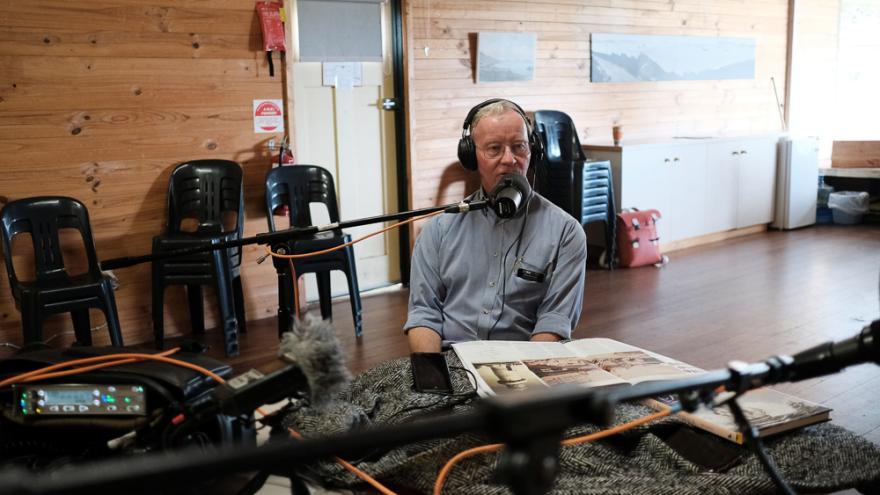
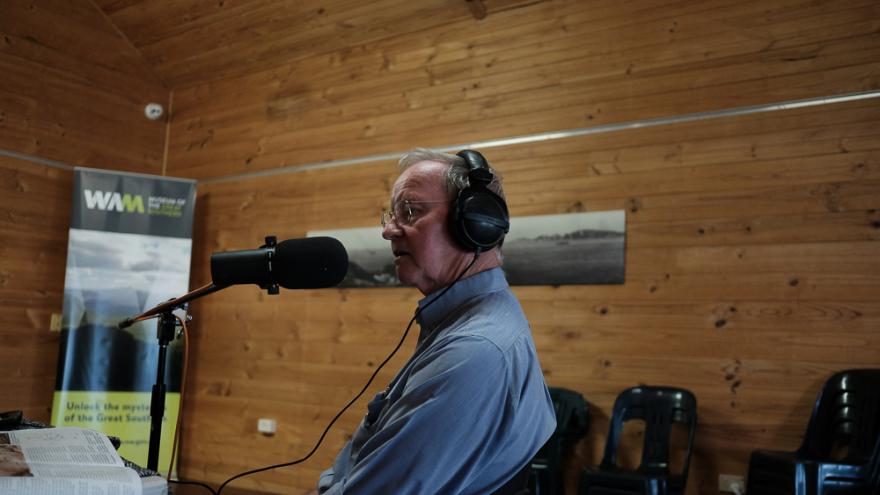
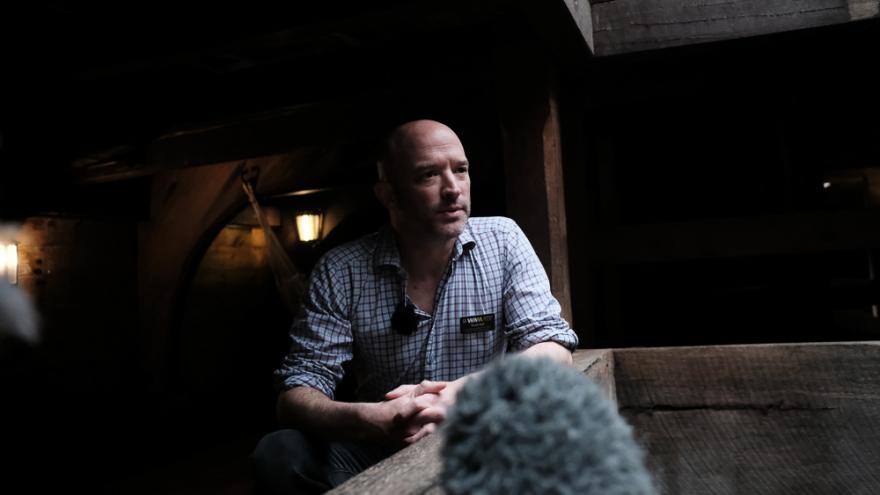
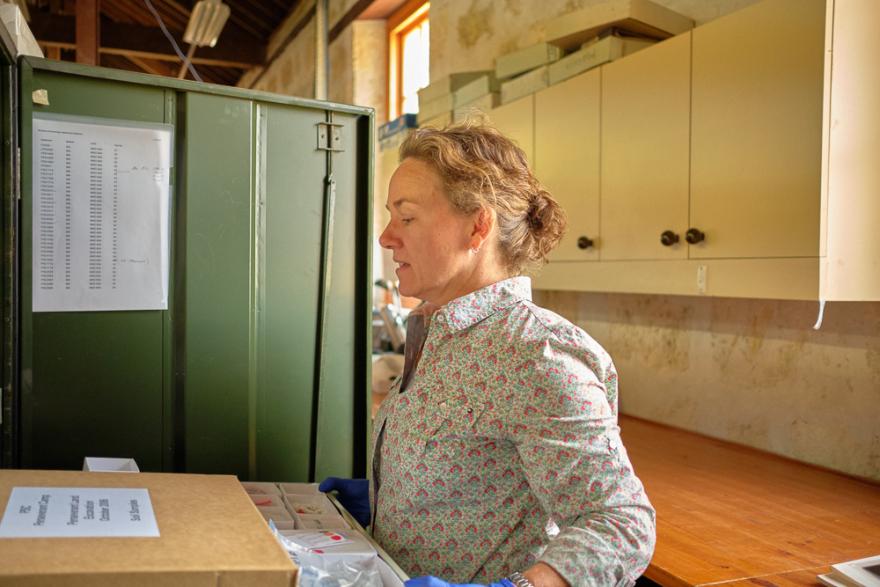
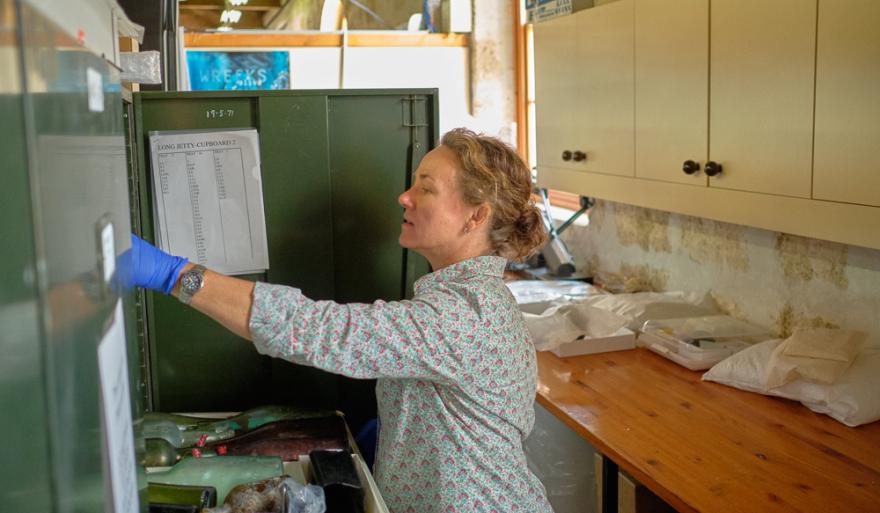
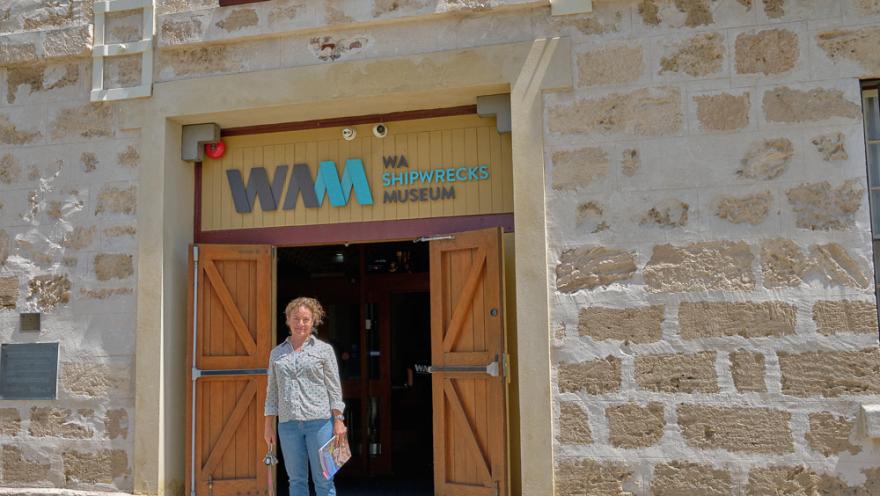
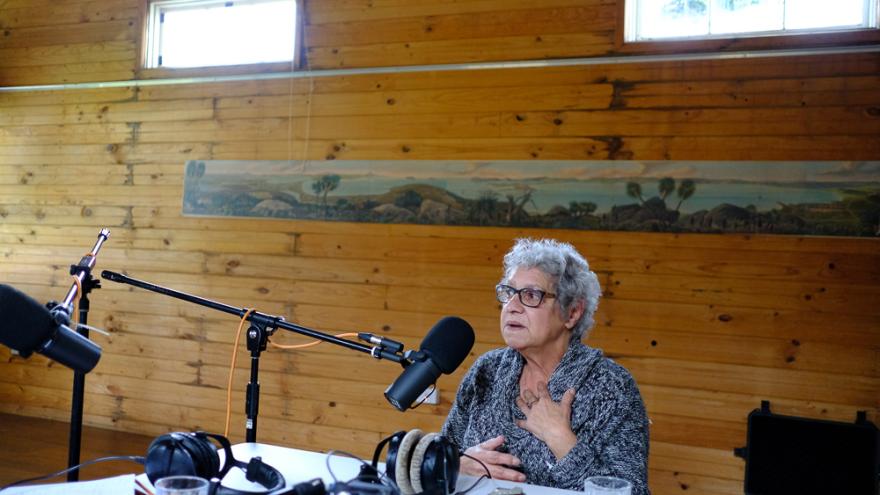
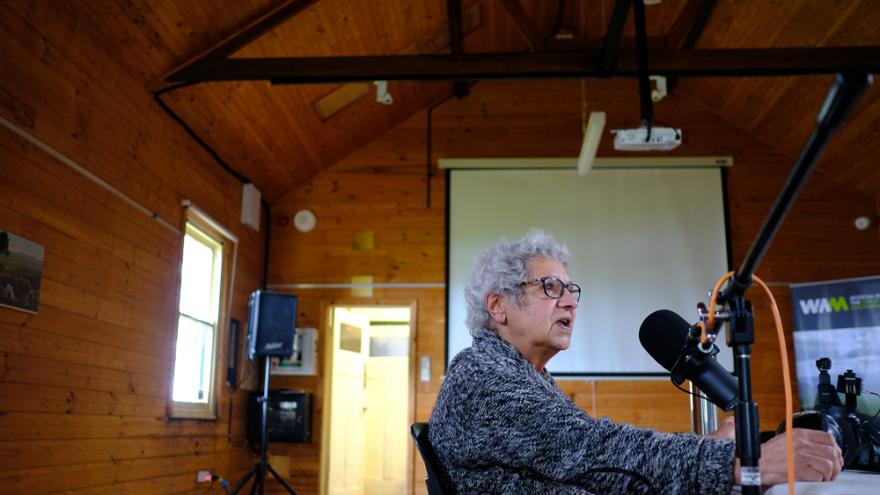
More Episodes
This episode takes place on the shores of Eclipse Island, a small, uninhabited parcel of land 17 kilometres south of Albany.
Today’s episode follows the global connections to Albany’s stories and shares how these stories are coming home today.
